|
|
Creator | Title | Description | Subject | Date |
| 251 |
 |
Narus, Scott P. | A domain analysis model for eIRB systems: addressing the weak link in clinical research informatics | Institutional Review Boards (IRBs) are a critical component of clinical research and can become a significant bottleneck due to the dramatic increase, in both volume and complexity of clinical research. Despite the interest in developing clinical research informatics (CRI) systems and supporting dat... | | 2014-01-01 |
| 252 |
 |
Dailey, Andrew T. | Guideline update for the performance of fusion procedures for degenerative disease of the lumbar spine. Part 3: Assessment of economic outcome | A comprehensive economic analysis generally involves the calculation of indirect and direct health costs from a societal perspective as opposed to simply reporting costs from a hospital or payer perspective. Hospital charges for a surgical procedure must be converted to cost data when performing a c... | | 2014-01-01 |
| 253 |
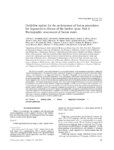 |
Dailey, Andrew T. | Guideline update for the performance of fusion procedures for degenerative disease of the lumbar spine. Part 4: Radiographic assessment of fusion status | The ability to identify a successful arthrodesis is an essential element in the management of patients undergoing lumbar fusion procedures. The hypothetical gold standard of intraoperative exploration to identify, under direct observation, a solid arthrodesis is an impractical alternative. Therefore... | | 2014-01-01 |
| 254 |
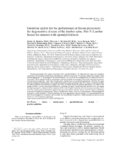 |
Dailey, Andrew T. | Guideline update for the performance of fusion procedures for degenerative disease of the lumbar spine. Part 9: Lumbar fusion for stenosis with spondylolisthesis | Patients presenting with stenosis associated with a spondylolisthesis will often describe signs and symptoms consistent with neurogenic claudication, radiculopathy, and/or low-back pain. The primary objective of surgery, when deemed appropriate, is to decompress the neural elements. As a result of t... | | 2014-01-01 |
| 255 |
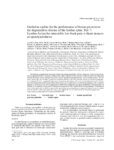 |
Dailey, Andrew T. | Guideline update for the performance of fusion procedures for degenerative disease of the lumbar spine. Part 7: Lumbar fusion for intractable low-back pain without stenosis or spondylolisthesis | Establishing an appropriate treatment strategy for patients presenting with low-back pain, in the absence of stenosis or spondylolisthesis, remains a controversial subject. Inherent to this situation is often an inability to adequately identify the source of low-back pain to justify various treatmen... | | 2014-01-01 |
| 256 |
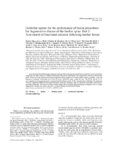 |
Dailey, Andrew T. | Guideline update for the performance of fusion procedures for degenerative disease of the lumbar spine. Part 2: Assessment of functional outcome following lumbar fusion | Assessment of functional patient-reported outcome following lumbar spinal fusion continues to be essential for comparing the effectiveness of different treatments for patients presenting with degenerative disease of the lumbar spine. When assessing functional outcome in patients being treated with l... | | 2014-01-01 |
| 257 |
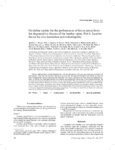 |
Dailey, Andrew T. | Guideline update for the performance of fusion procedures for degenerative disease of the lumbar spine. Part 8: Lumbar fusion for disc herniation and radiculopathy | Patients suffering from a lumbar herniated disc will typically present with signs and symptoms consistent with radiculopathy. They may also have low-back pain, however, and the source of this pain is less certain, as it may be from the degenerative process that led to the herniation. The surgical al... | | 2014-01-01 |
| 258 |
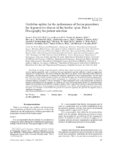 |
Dailey, Andrew T. | Guideline update for the performance of fusion procedures for degenerative disease of the lumbar spine. Part 6: Discography for patient selection | Identifying the etiology of pain for patients suffering from chronic low-back pain remains problematic. Noninvasive imaging modalities, used in isolation, have not consistently provided sufficient evidence to support performance of a lumbar fusion. Provocative testing has been used as an adjunct in ... | | 2014-01-01 |
| 259 |
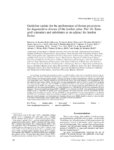 |
Dailey, Andrew T. | Guideline update for the performance of fusion procedures for degenerative disease of the lumbar spine. Part 16: Bone graft extenders and substitutes as an adjunct for lumbar fusion | In an attempt to enhance the potential to achieve a solid arthrodesis and avoid the morbidity of harvesting autologous iliac crest bone (AICB) for a lumbar fusion, numerous alternatives have been investigated. The use of these fusion adjuncts has become routine despite a lack of convincing evidence ... | | 2014-01-01 |
| 260 |
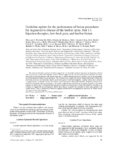 |
Dailey, Andrew T. | Guideline update for the performance of fusion procedures for degenerative disease of the lumbar spine. Part 13: Injection therapies, low-back pain, and lumbar fusion | The medical literature continues to fail to support the use of lumbar epidural injections for long-term relief of chronic back pain without radiculopathy. There is limited support for the use of lumbar epidural injections for short-term relief in selected patients with chronic back pain. Lumbar intr... | | 2014-01-01 |
| 261 |
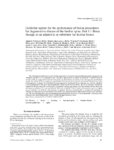 |
Dailey, Andrew T. | Guideline update for the performance of fusion procedures for degenerative disease of the lumbar spine. Part 14: Brace therapy as an adjunct to or substitute for lumbar fusion | The utilization of orthotic devices for lumbar degenerative disease has been justified from both a prognostic and therapeutic perspective. As a prognostic tool, bracing is applied prior to surgery to determine if immobilization of the spine leads to symptomatic relief and thus justify the performanc... | | 2014-01-01 |
| 262 |
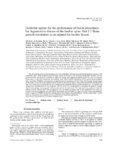 |
Dailey, Andrew T. | Guideline update for the performance of fusion procedures for degenerative disease of the lumbar spine. Part 17: Bone growth stimulators as an adjunct for lumbar fusion | The relationship between the formation of a solid arthrodesis and electrical and electromagnetic energy is well established; most of the information on the topic, however, pertains to the healing of long bone fractures. The use of both invasive and noninvasive means to supply this energy and supplem... | | 2014-01-01 |
| 263 |
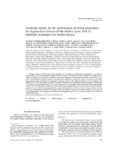 |
Dailey, Andrew T. | Guideline update for the performance of fusion procedures for degenerative disease of the lumbar spine. Part 11: Interbody techniques for lumbar fusion | Interbody fusion techniques have been promoted as an adjunct to lumbar fusion procedures in an effort to enhance fusion rates and potentially improve clinical outcome. The medical evidence continues to suggest that interbody techniques are associated with higher fusion rates compared with posterolat... | | 2014-01-01 |
| 264 |
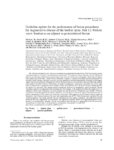 |
Dailey, Andrew T. | Guideline update for the performance of fusion procedures for degenerative disease of the lumbar spine. Part 12: Pedicle screw fixation as an adjunct to posterolateral fusion | The utilization of pedicle screw fixation as an adjunct to posterolateral lumbar fusion (PLF) has become routine, but demonstration of a definitive benefit remains problematic. The medical evidence indicates that the addition of pedicle screw fixation to PLF increases fusion rates when assessed with... | | 2014-01-01 |
| 265 |
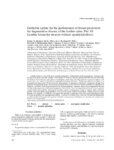 |
Dailey, Andrew T. | Guideline update for the performance of fusion procedures for degenerative disease of the lumbar spine. Part 10: Lumbar fusion for stenosis without spondylolisthesis | Lumbar stenosis is one of the more common radiographic manifestations of the aging process, leading to narrowing of the spinal canal and foramen. When stenosis is clinically relevant, patients often describe activity-related low-back or lower-extremity pain, known as neurogenic claudication. For tho... | | 2014-01-01 |
| 266 |
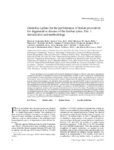 |
Dailey, Andrew T. | Guideline update for the performance of fusion procedures for degenerative disease of the lumbar spine. Part 1: Introduction and methodology | Fusion procedures are an accepted and successful management strategy to alleviate pain and/or neurological symptoms associated with degenerative disease of the lumbar spine. In 2005, the first version of the "Guidelines for the performance of fusion procedures for degenerative disease of the lumbar ... | | 2014-01-01 |
| 267 |
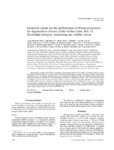 |
Dailey, Andrew T. | Guideline update for the performance of fusion procedures for degenerative disease of the lumbar spine. Part 15: Electrophysiological monitoring and lumbar fusion | Intraoperative monitoring (IOM) is commonly used during lumbar fusion surgery for the prevention of nerve root injury. Justification for its use stems from the belief that IOM can prevent nerve root injury during the placement of pedicle screws. A thorough literature review was conducted to determin... | | 2014-01-01 |
| 268 |
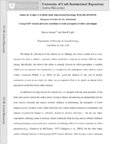 |
Light, Alan R. | Response to Letter by Dr. Smirmaul Group III/IV muscle afferents contribute to both perception of effort and fatigue | We thank Dr. Smirmaul for his interest in our findings, but advise caution not to over-interpret the data to address a question which would have required an entirely different study design. Specifically, the letter to the editor is strongly focused on effort perception, a variable which was, as expe... | | 2014-01-01 |
| 269 |
 |
Hunt, Steven C. | Association of egg consumption and calcified atherosclerotic plaque in the coronary arteries: The NHLBI Family Heart Study | Background and Aims: Eggs are a ubiquitous and important source of dietary cholesterol and nutrients, yet their relationship to coronary heart disease (CHD) remains unclear. While some data have suggested a positive association between egg consumption and CHD, especially among diabetic subjects, lim... | | 2014-01-01 |
| 270 |
 |
Meadows, Natalie | Hunting for insight: an analysis of hunting behaviors in mice | Behaviors revolving around the acquisition of food resources are complex and crucial processes for many organisms. Hunting is an especially interesting behavior, which involves complex cognitive and social behaviors. In order to study rudimentary hunting behaviors in a controlled setting a model org... | Hunting; Mouse behavior; ADD/ADHD; Autism | 2014-06-24 |
| 271 |
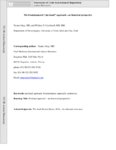 |
Couldwell, William T. | The frontotemporal (Pterional) approach: an historical perspective | The frontotemporal, so-called "pterional" approach has evolved with the contribution of many neurosurgeons over the past century. It has stood the test of time and been the most commonly used transcranial approach in neurosurgery. In its current form, drilling the sphenoid wing as far down as the su... | | 2012-01-01 |
| 272 |
 |
Kendall, Katherine | Quality of life scores compared to objective measures of swallowing function after oropharyngeal chemoradiation | Objectives: To compare objective measures of swallowing function with patient reports of swallowing-related Quality of Life one year after treatment of oropharyngeal cancer with chemoradiation therapy. Study Design: Patients seen for follow-up at least one year after treatment of oropharyngeal carci... | | 2014-01-01 |
| 273 |
 |
Dailey, Andrew T. | Lateral mass screw fixation in the cervical spine | To The Editor: We read with interest the article by Kawabata et al.15 (Kawabata S, Watanabe K, Hosogane N, et al: Surgical correction of severe cervical kyphosis in patients with neurofibromatosis Type 1. Report of 3 cases. J Neurosurg Spine 18:274-279, March 2013). Reconstructive spinal surgery has... | | 2014-01-01 |
| 274 |
 |
Frederick, Jeanne M. | Centrin 2 is required for mouse olfactory ciliary trafficking and development of ependymal cilia planar polarity | Centrins are ancient calmodulin-related Ca2-binding proteins associated with basal bodies. In lower eukaryotes, Centrin2 (CETN2) is required for basal body replication and positioning, although its function in mammals is undefined. We generated a germline CETN2 knock-out (KO) mouse presenting with s... | | 2014-01-01 |
| 275 |
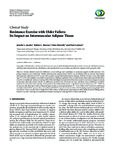 |
LaStayo, Paul C. | Resistance exercise with older fallers: Its impact on intermuscular adipose tissue | Objective. Greater skeletal muscle fat infiltration occurs with age and contributes to numerous negative health outcomes. The primary purpose was to determine whether intermuscular adipose tissue (IMAT) can be influenced by an exercise intervention and if a greater reduction in IMAT occurs with ecce... | | 2014-01-01 |

























